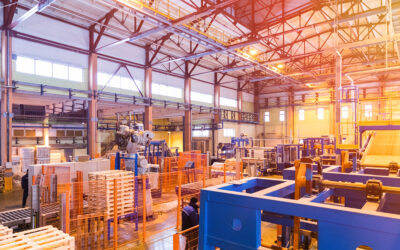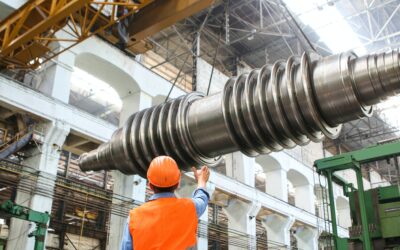Next up in our blog series – what are digital twins? This blog will discuss the growing importance of Digital Twin technology in the manufacturing industry and how companies, like Konektio, use that technology to realize your digital transformation goals.
What is a digital twin?
A digital twin is a virtual representation of a physical object, process, or system. It is a computerized model that mimics the real-world object or system, allowing designers, engineers, and operators to visualize and simulate its behavior and performance in a digital environment.
Digital twins use data from sensors, IoT devices, and other sources to replicate the physical object or system’s behavior and provide real-time feedback. They enable stakeholders to monitor and optimize the performance of the object or system, identify potential issues before they occur, and make data-driven decisions to improve efficiency and reduce costs.
Digital twins are commonly used in manufacturing, healthcare, and smart city applications, but they can also be used in other industries. They are a key component of Industry 4.0 and the Internet of Things (IoT) and are expected to play a crucial role in the development of smart cities, autonomous vehicles, and other emerging technologies.
Why are digital twins important to manufacturers?
Digital twins are becoming increasingly important to manufacturers for several reasons:
- Predictive maintenance: With a digital twin, manufacturers can monitor and analyze the performance of their equipment and predict when maintenance is required. This helps to reduce downtime and maintenance costs, as well as improve productivity and product quality.
- Process optimization: Manufacturers can use digital twins to simulate different manufacturing scenarios and optimize their processes for maximum efficiency and productivity. This can help to reduce waste, improve quality, and increase throughput.
- Quality control: Digital twins can be used to simulate the production process and identify potential quality issues before they occur. This allows manufacturers to make adjustments and improvements to their processes to ensure that their products meet the required quality standards.
- Cost savings: By using digital twins to optimize their processes and equipment, manufacturers can reduce costs associated with maintenance, downtime, and waste. This can lead to significant cost savings over time.
- Innovation: Digital twins allow manufacturers to experiment with new designs and production techniques in a virtual environment, without the need for physical prototypes. This can lead to faster innovation and time-to-market for new products.
How long have digital twins been around?
The concept of digital twins has been around since the early 2000s, but it was not until the advent of the Internet of Things (IoT) and Industry 4.0 that the technology really took off. The term “digital twin” was first coined by Dr. Michael Grieves of the University of Michigan in 2002, but it was not widely used until the last decade.
The first digital twins were developed for complex systems such as aircraft engines and power plants, where they were used to monitor performance and predict maintenance requirements. Over time, the technology has evolved and become more widespread, with digital twins now being used in a wide range of industries, including manufacturing, healthcare, and smart cities.
Today, digital twins are a key component of Industry 4.0, which is focused on the digital transformation of manufacturing and the integration of advanced technologies such as IoT, artificial intelligence, and robotics. As the technology continues to evolve, we can expect to see even more advanced digital twins being developed for an even wider range of applications.
Why is data so important for a digital twin?
Data is critical for a digital twin because it is what enables the virtual model to accurately replicate the behavior and performance of the physical object or system. Digital twins rely on a constant stream of real-time data from sensors, IoT devices, and other sources to simulate the physical object’s behavior and predict its future performance.
For example, in a manufacturing plant, a digital twin may use data from sensors on production equipment to monitor performance, predict maintenance requirements, and optimize production processes. The digital twin can analyze the data to identify patterns and anomalies, simulate different scenarios, and make predictions about future performance.
Without accurate and timely data, a digital twin cannot function effectively. Data quality and accuracy are essential to ensure that the digital twin accurately reflects the physical object’s behavior and performance. If the data is incomplete or inaccurate, the digital twin may provide incorrect predictions and recommendations, leading to suboptimal decisions and outcomes.
This may all sound like a lot to incorporate, but Konektio is prepared to guide you through this process and help you realize the value of all aspects of digital transformation, including digital twins. Whether it is condition-based monitoring, predictive maintenance, or tracking the energy efficiency of all your assets – Konektio will provide you with an out-of-the-box solution with data-driven insights that allow you to easily see whats most important to your team.
About Konektio
Konektio is at the forefront of the rapidly expanding Industrial IoT (“IIoT”) technology sector, digitally transforming the global manufacturing industry via smart cloud-based platforms. Konektio helps industrial customers reduce energy/utility costs, track and reduce carbon emissions and monitor/maintain their equipment effectiveness via its suite of SaaS solutions. We have served a wide range of industrial manufacturing, processing, and utility customers with digital solutions for over five years with our teams having decades of experience in the industrial sector. We have customers across the UK, Europe, and the USA and are continuing to scale up our commercial activities with the recent launch of two newly developed and upgraded SaaS solutions: Predict (intelligent machine analytics and condition-based monitoring) and Impact (Energy efficiency, carbon calculations, and water/air/gas/electricity monitoring) in one single platform for use by site managers and C-level executives.
Find us on Facebook, LinkedIn, and Twitter.



